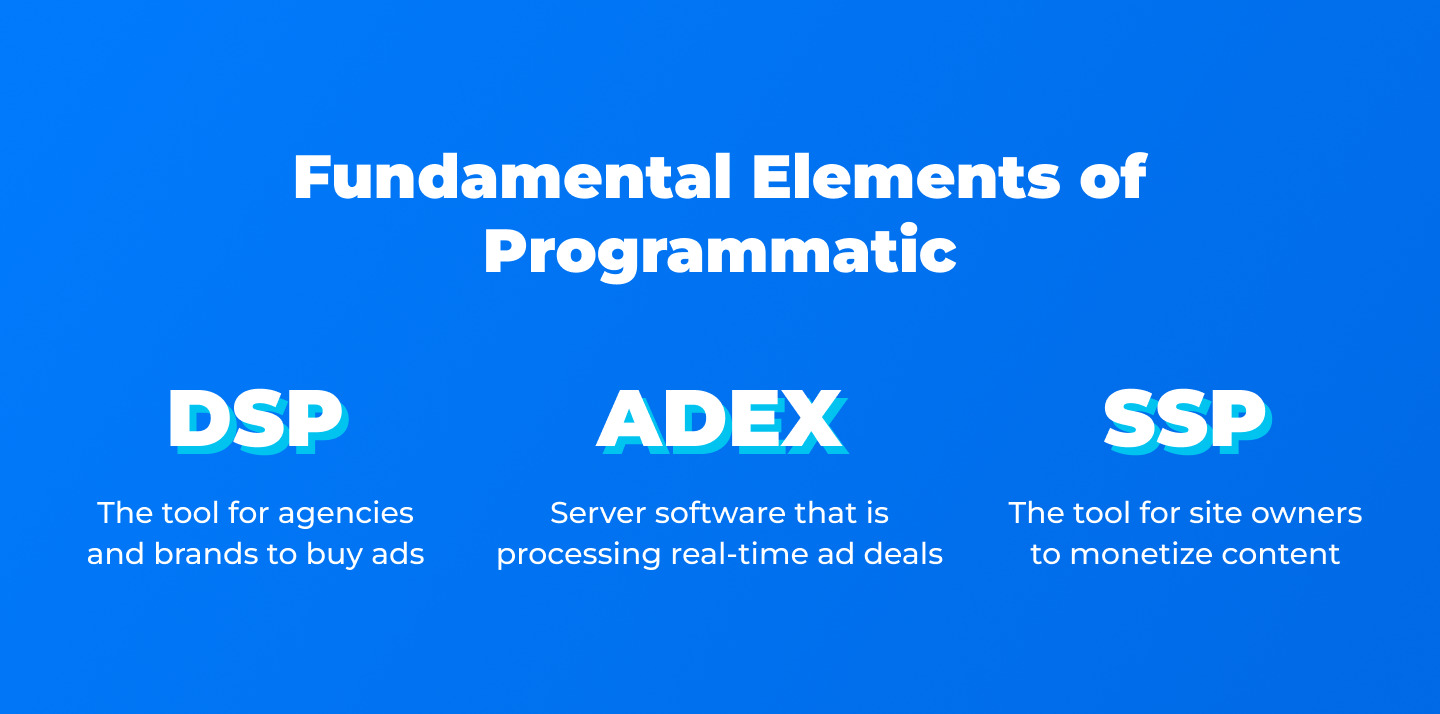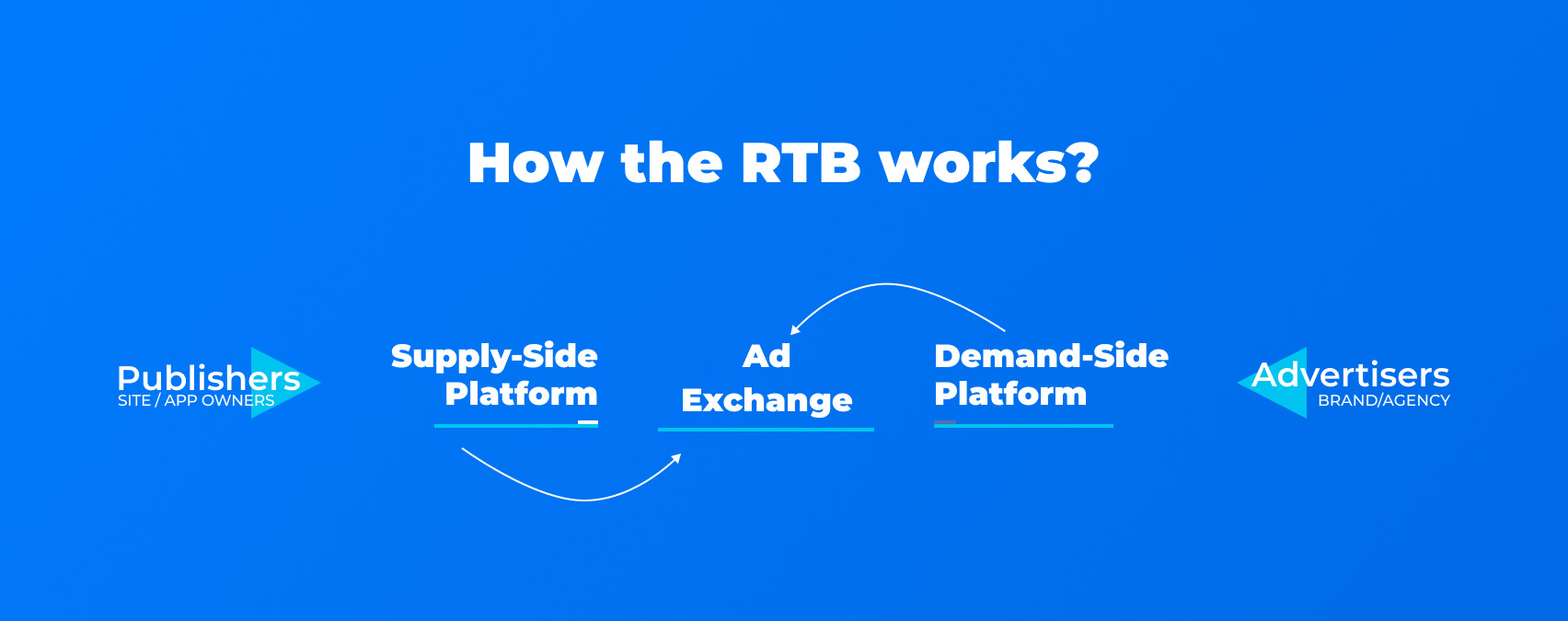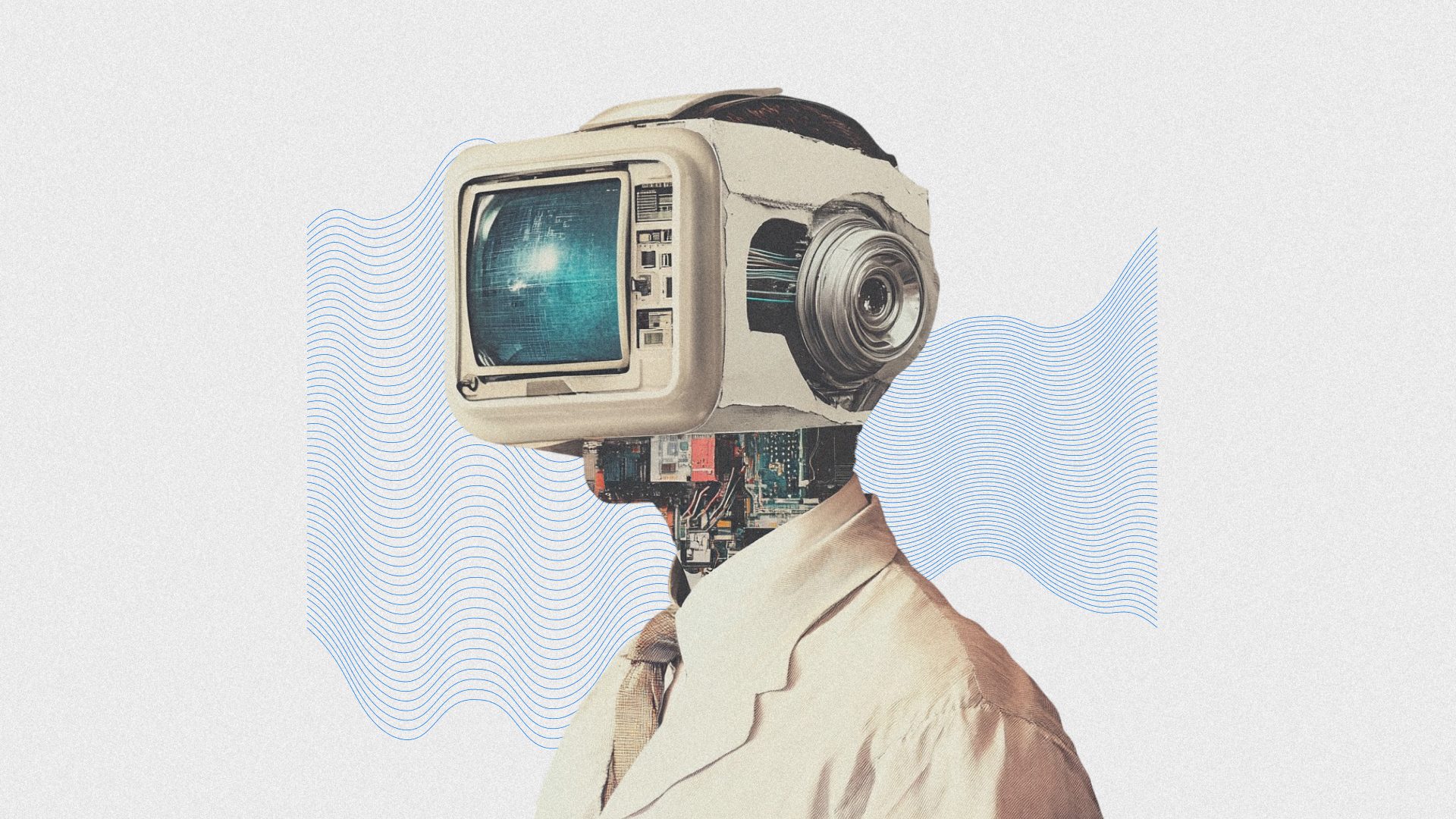Mobile screens dominate our day, yet buying their ad space still looks complex. Programmatic marketing solves that puzzle by letting software bid for impressions in the split-second between a tap and a page load. One figure shows why the shift matters: 91.3% of U.S. display ads already move through automated auctions rather than manual deals. When nearly every placement is sold this way, skipping automation means paying more for less reach.
Table of Contents
This guide offers programmatic advertising explained in clear terms. You’ll see how automated bidding stacks up against old-school insertion orders, what formats fit best, and which brands gain the most from programmatic digital advertising. We’ll also flag common hurdles, like signal loss, and share fixes you can start today. By the end, you’ll know how to turn software into a silent teammate that buys the right impressions at the right price while you focus on strategy, not spreadsheets.
What is Programmatic Advertising?
Think of it as an autopilot for ad buying. Programmatic buying uses software that bids on digital space the instant the page loads. Machines weigh price, format, and audience faster than any team of people. The range of automatically optimized processes includes operations of selling and buying ads, and a real-time analysis of data concerning user behavior, audience dynamics, and campaign inputs.
In a classic marketing strategy, the marketer will look for relevant websites and advertising formats to find places on the Internet where a specific ad will reach its target audience cost-effectively and in the shortest terms. The same situation is for publishers who want to earn money monetizing content. Classically, they are finding direct advertisers and Ad partners manually. Programmatic advertising software acts the same way. The only difference is that it is automated and extremely fast!
Such advertising gives companies the ability to start real-time bidding on ad spaces on a wide variety of sites or apps. For example, a brand can advertise on hundreds of websites within milliseconds using demand-side platforms [DSPs] — all thanks to sophisticated programmatic advertising software and algorithms. These algorithms also collect user data to show ads that cater to their needs. On the other side, publishers can connect to the same advertising ecosystem via the sell-side platforms [SSPs] and start making money simultaneously!
In the following parts of the article, we will also speak more about the terminology, but let’s start from the beginning!
History and Benefits of Programmatic
Programmatic ads appeared about 30 years ago, in the early 1990s. Back then, all advertising campaigns used the old way of direct media buying. It involved a lot of human interactions, audience analysis, bidding, and campaign reporting – people from marketing companies did everything manually. Marketers once emailed sites, haggled over rates, and booked banners by hand. Publishers waited for deals to close before a single ad went live. Programmatic media buying swaps those slow steps for code that handles:
- auction bids in real-time;
- quick checks of audience data;
- on-the-spot placement of the winning creative.
As a result, brands reach the right viewers in milliseconds, and site owners fill inventory without cold calls. And handheld operations always contain mistakes. As you may know, the process took a terrific amount of time, making it inefficient.
The first programmatic banner came from the “You Will” campaign and included a question: “Have you ever clicked your mouse right there?” Its’ click-through rate was about 50%, meaning half of the people who saw it got interested.
Compared to direct buying, programmatic advertising turned out to be beneficial in the following ways:
- it saves time and eliminates a lot of unnecessary negotiations;
- it is budget-friendly due to the variety of ad spots, high-level of optimization, and fewer intermediate commissions;
- programmatic advertising brings the possibility of attracting a wider audience and setting specific social, demographic, and behavioral targeting;
- better campaign analytics and it can be even real-time!
Every party in the ad deal could put less effort into mechanical tasks, as the specific software automated them. And, unlike custom ads, programmatic ones provide guaranteed impressions, and controlling them is much more possible. In 2022, direct buyers purchased about 82% of web ads via programmatic channels, and this number is promising to increase in 2025.

Every piece of programmatic media buying rests on three pillars that speak the same digital language. Picture them as a relay team: one finds inventory, one hosts the auction, and one places the winning bid. Together they keep campaigns sprinting at machine speed.
DSP, or a demand-side platform, is software used by ad space purchasers. It allows advertisers to automate the process of buying & placing advertising. It can be a self-serve advertising platform, as well as well-known Google Adwords and Bing Ads.
SSP means a supply-side platform or sell-side platform. Another side of the deal uses it. Website or Application owners need this software to organize the ad space on their pages, efficiently sell it, and optimize this process. A popular example is Google Ad Sense.
Ad Exchange is a kind of server that acts as an automated marketplace where advertisers and publishers buy and provide advertising space, i.e. Exchanging.
When these tools sync, programmatic marketing turns scattered impressions into one coherent marketplace where every player sees fair prices and real-time results.
How It Works? 3 Elements of Programmatic World
All programmatic software relies on the same definitions. Let’s explain the main of them briefly and introduce the terminology.
DSP, or a demand-side platform, is software used by ad space purchasers. It allows advertisers to automate the process of buying & placing advertising. It can be a self-serve advertising platform, as well as well-known Google Adwords and Bing Ads.
SSP means a supply-side platform or sell-side platform. Another side of the deal uses it. Website or Application owners need this software to organize the ad space on their pages, efficiently sell it, and optimize this process. A popular example is Google Ad Sense.
Ad Exchange is a kind of server that acts as an automated marketplace where advertisers and publishers buy and provide advertising space, i.e. Exchanging.
It is the core of all programmatic advertising, and the magic is happening right here. The algorithms that we were talking about in the first part of the article start doing their job. In less than 300 milliseconds advertisers’ DSP sends a request to the Ad Exchange and it chooses the best place to run the buyer’s Ad through the hundreds of SSPs with thousands of sites, apps, and streaming services connected to it. After that, the bid response is coming back to an Ad Exchange server.

Real-time bidding (RTB) is the rapid-fire auction that powers most programmatic ad buying. Here’s the four-step dance that happens each time a page loads:
- The publisher opens a slot and sends it to an SSP.
- SSP passes the offer into the Ad Exchange.
- Multiple DSPs review the user profile and place bids.
- The highest bid wins; the ad renders before the page finishes loading.
The full loop takes less than 120 ms, faster than a blink, yet it delivers person-level targeting at scale. That speed and precision explain the growing share of programmatic display advertising across the web and in-app inventory today.
If all the rules are met, the ad appears and the user can see it. This whole process happens faster than a person blinks! The last one – DMP, or a data management platform, is software for processing information about an audience and bids. It is responsible for collecting, organizing, and analyzing data. It helps to enhance targeting options for advertisers and optimize the whole advertising process.
Types of Programmatic Advertising
Think of programmatic buying as a menu, not a single dish. Different deal types trade reach, price, and control in their own way. Knowing each option helps brands mold digital programmatic advertising to fit budget, brand-safety rules, and speed.
- Open Auction (RTB). Any verified buyer can bid in real time; best for a wide reach at the market’s lowest price.
- Private Marketplace (PMP). Invitation-only auction run by the publisher; ideal when you need premium slots with added brand safety.
- Preferred Deal. One buyer gets “first look” at a fixed CPM before the inventory enters open auction; handy for securing quality placements while keeping the right to pass.
- Programmatic Guaranteed. Buyer and seller lock in impressions and price ahead of time, then deliver through automation; perfect for big launches that can’t risk out-of-stock inventory.
Open auctions cast the widest net; guaranteed deals offer rock-solid placement. Mixing these levers lets campaigns glide from mass reach to pinpoint accuracy without leaving the programmatic display advertising ecosystem. Pick the blend that meets your goals, and your ads land where they matter, no wasted spend, no last-minute scrambles.
Programmatic vs. Traditional Digital Advertising
Traditional digital buys rely on people emailing price sheets, booking banners by hand, and waiting for screenshots for proof of play. Programmatic media buying hands those chores to software that bids, books, and tracks ads in real time.
Speed & Automation
- Traditional: A placement may take days to negotiate.
- Programmatic: The system bids and serves an impression in under 120 ms.
Targeting Precision
- Traditional: Broad site lists and basic demo filters.
- Programmatic: Device IDs, hashed emails, and live context signals refine each bid.
This tighter focus shows why programmatic advertising meaning often centers on “one message, one person.”
Cost Control
- Traditional: Fixed CPMs with little transparency on margin or fraud.
- Programmatic: Open auctions reveal true market price; frequency caps reduce waste.
Brands see where every cent goes, a core promise of digital programmatic advertising.
Measurement & Optimization
- Traditional: End-of-campaign reports come days or weeks later.
- Programmatic: Dashboards update instantly, letting teams pause, tweak, or scale on the fly.
Creative Flexibility
- Traditional: Swapping artwork mid-flight may trigger new contracts.
- Programmatic: Dynamic creative can update copy or offers per user without relaunching the buy.
Manual deals still suit niche sponsorships, but for reach, accuracy, and live insight, programmatic ad buying wins on almost every metric. Use each method where it shines, and you’ll stretch your budget while keeping brand stories sharp.
Who Should Use Programmatic Advertising?
Programmatic advertising isn’t just for tech giants; it fits any marketer who needs cheaper reach and granular control. Automated auctions adjust bids in milliseconds, something human buyers simply can’t match. From birthday-cake bakeries to global fashion houses, the technology levels the playing field.
- High-volume eCommerce stores need automated bids to protect margins quickly.
Multi-brand agencies use one dashboard to cut trafficking and monitor performance live. - App publishers pivot campaigns hourly; RTB scales installs without overspend.
- B2B niche advertisers find rare job titles and firmographics with data layers.
- Local retailers stretch tight budgets by geofencing bids around their postcode.
- Digital publishers monetize unsold slots with floor prices and guaranteed fills.
If any line rings true, programmatic ad buying deserves a spot in your plan; the code bids and tracks while you craft messages that sell. It also records every impression, giving you transparent cost and outcome data for every cent spent. Start small, test often, and let the numbers guide incremental budget increases.
Challenges of Programmatic Ads
Programmatic ads boost reach, but they also bring hurdles that can drain budget and trust. Here are three pain points and clear fixes any team can apply today.
Disappearing Cookies
Browsers keep phasing out third-party cookies, shrinking the signals that feed precise bids. Shift to hashed emails, clean-room matches, and strong context data. These first-party routes rebuild scale while respecting privacy rules and keep programmatic media buying efficient even as old trackers fade.
Fraud and Brand Safety
Invalid traffic and shocking content waste spend and damage brands. Combine pre-bid verification, app-ads.txt, and direct paths with trusted SSP partners. Set strict domain lists and block lists inside the DSP. Ongoing audits plus machine filters stop bad impressions before money moves.
Skill and Tool Gaps
Software evolves fast, yet teams may lag. Close the gap with regular training, clear KPIs, and shared dashboards. Begin with a managed service or hybrid model, then migrate tasks in-house as skills grow. Solid processes keep tests small, lessons quick, and wins repeatable. Treat data quality, brand safety, and team skills as one system. Address these challenges early, and programmatic digital advertising remains transparent, cost-smart, and ready for the next wave of devices or regulations.
Our tech staff and AdOps are formed by the best AdTech and MarTech industry specialists with 10+ years of proven track record!

Final Thoughts
Programmatic marketing is no longer optional. Automated auctions already control 91.3% of U.S. display spend, and analysts expect the last slice to shift soon. Audiences jump from news apps to streaming sites in seconds; manual buys can’t keep pace. Brands that still depend on emails and fixed-rate cards waste budget and miss data. Follow the steps above, collect first-party signals, pair them with privacy-safe IDs, and plug into the right programmatic media buying pipes to confirm every bid reaches one real shopper at the best price.
Contact us, and our team will link your data, launch smart programmatic buying campaigns, and steer your budget toward measurable growth on every screen.
FAQ
How much does programmatic advertising typically cost?
CPMs in open auctions can start below $1 and climb past $10 for premium video. Platform and data fees usually add 10-20% on top of media.
Is programmatic advertising suitable for small businesses?
Yes. Self-serve DSPs let you start with daily budgets under $50 and target only the ZIP codes or interests that matter.
How does programmatic advertising ensure brand safety?
Pre-bid filters, blocklists, and third-party verification scan every impression. Unsafe pages are excluded before money changes hands.
What’s the difference between DSP and SSP in programmatic advertising?
A DSP helps advertisers buy inventory automatically; an SSP helps publishers sell that inventory at the best price.
What’s the difference between programmatic display and programmatic video ads?
Display uses banners or rich media; video serves in-stream or out-stream clips. Video costs more per impression but delivers sight, sound, and motion for deeper engagement.

